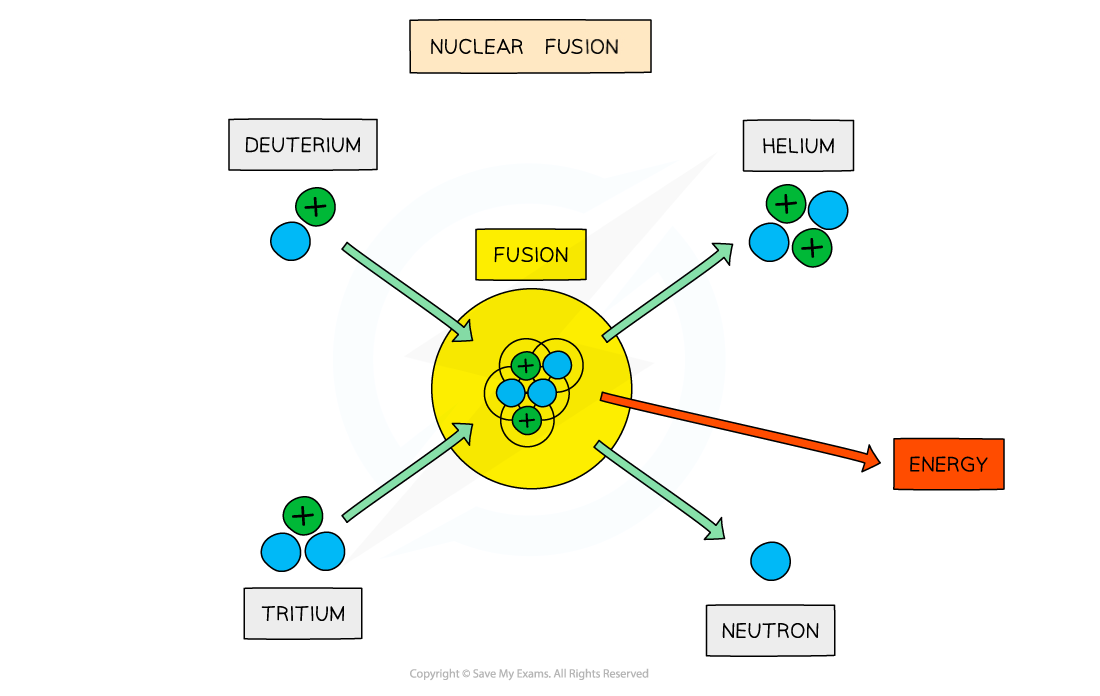Nuclear Fusion (OCR GCSE Physics A (Gateway)): Revision Note
Exam code: J249
Nuclear Fusion
Small nuclei can react to release energy in a process called nuclear fusion
Nuclear fusion is defined as:
When two light nuclei join to form a heavier nucleus
This process requires extremely high temperatures to maintain
This is why nuclear fusion has proven very hard to reproduce on Earth
Stars use nuclear fusion to produce energy
In most stars, hydrogen atoms are fused together to form helium and produce lots of energy

Two hydrogen nuclei are fusing to form a helium nuclei
The energy produced during nuclear fusion comes from a very small amount of the particle’s mass being converted into energy
Albert Einstein described the mass-energy equivalence with his famous equation:
E = m × c2
Where:
E = energy released from fusion in Joules (J)
m = mass converted into energy in kilograms (kg)
c = the speed of light in metres per second (m/s)
The amount of energy released during nuclear fusion is huge:
The energy from 1 kg of hydrogen that undergoes fusion is equivalent to the energy from burning about 10 million kilograms of coal
Designing a working fusion power station which produces more power than it uses is a major goal in engineering
ITER in France is currently the best performing fusion power station, almost giving out as much energy as it requires to power it
For fusion in a power station, deuterium and tritium, heavy isotopes of hydrogen are used

The fusion of deuterium and tritium to form helium with the release of energy
Worked Example
An example of a hydrogen fusion reaction which takes place in stars is shown here.

Which of the following is a valid reason why hydrogen fusion is not currently possible on Earth?
A Hydrogen fusion produces dangerous radioactive waste
B Hydrogen nuclei require very high temperature to fuse together
C Hydrogen is a rare element that would be difficult to get large amounts of
D Hydrogen fusion does not produce enough energy to be commercially viable
Answer: B
Hydrogen nuclei have positive charges
So two hydrogen nuclei would have a repulsive force between them
High temperatures are required to give the nuclei enough energy to overcome the repulsive force
The answer is not A because the products of the hydrogen fusion shown in the reaction is helium
Helium is an inert gas
The answer is not C because hydrogen is a very abundant element
It is the most common element in the universe
The answer is not D because hydrogen fusion would produce a huge amount of energy

Unlock more, it's free!
Did this page help you?